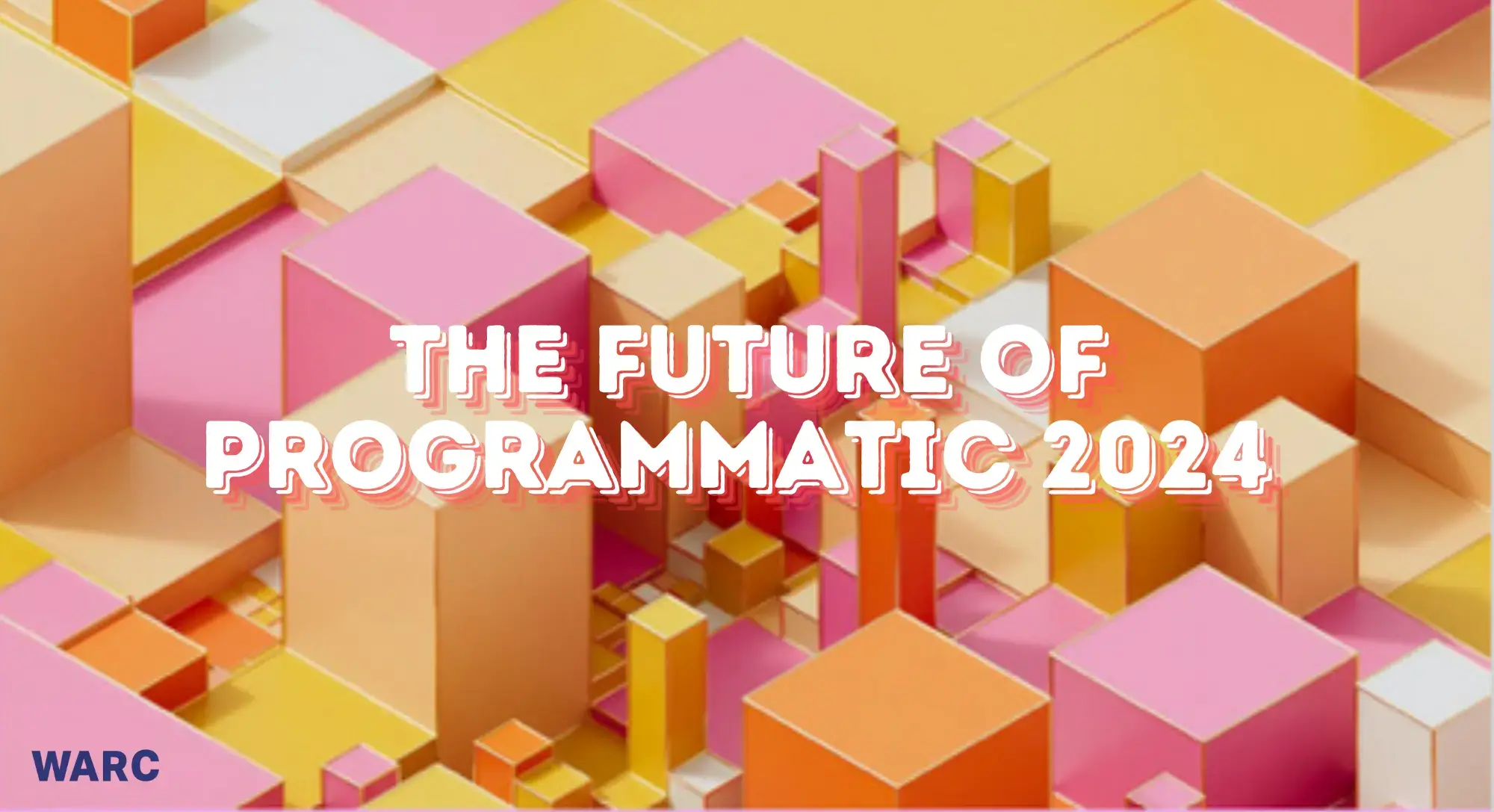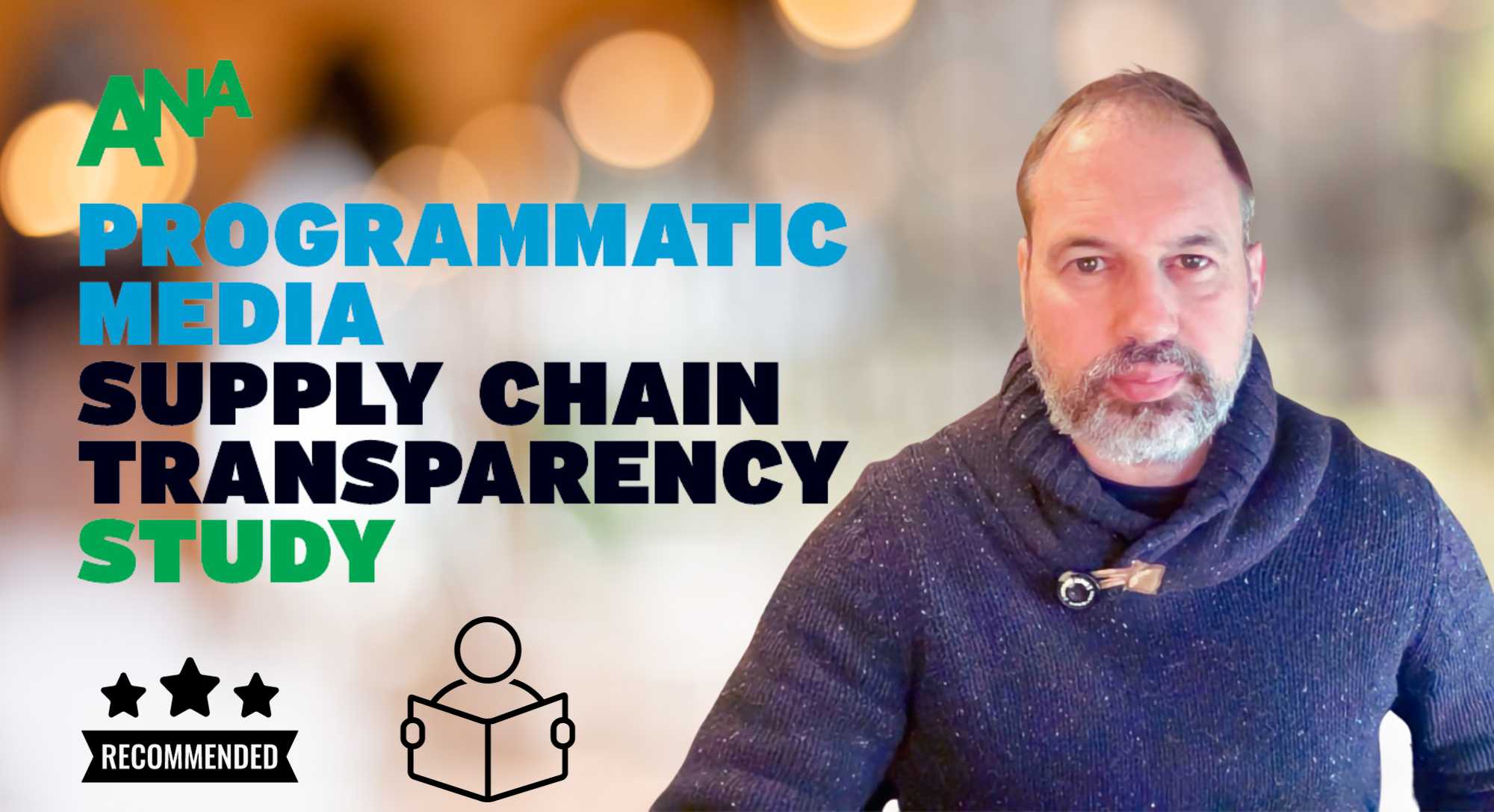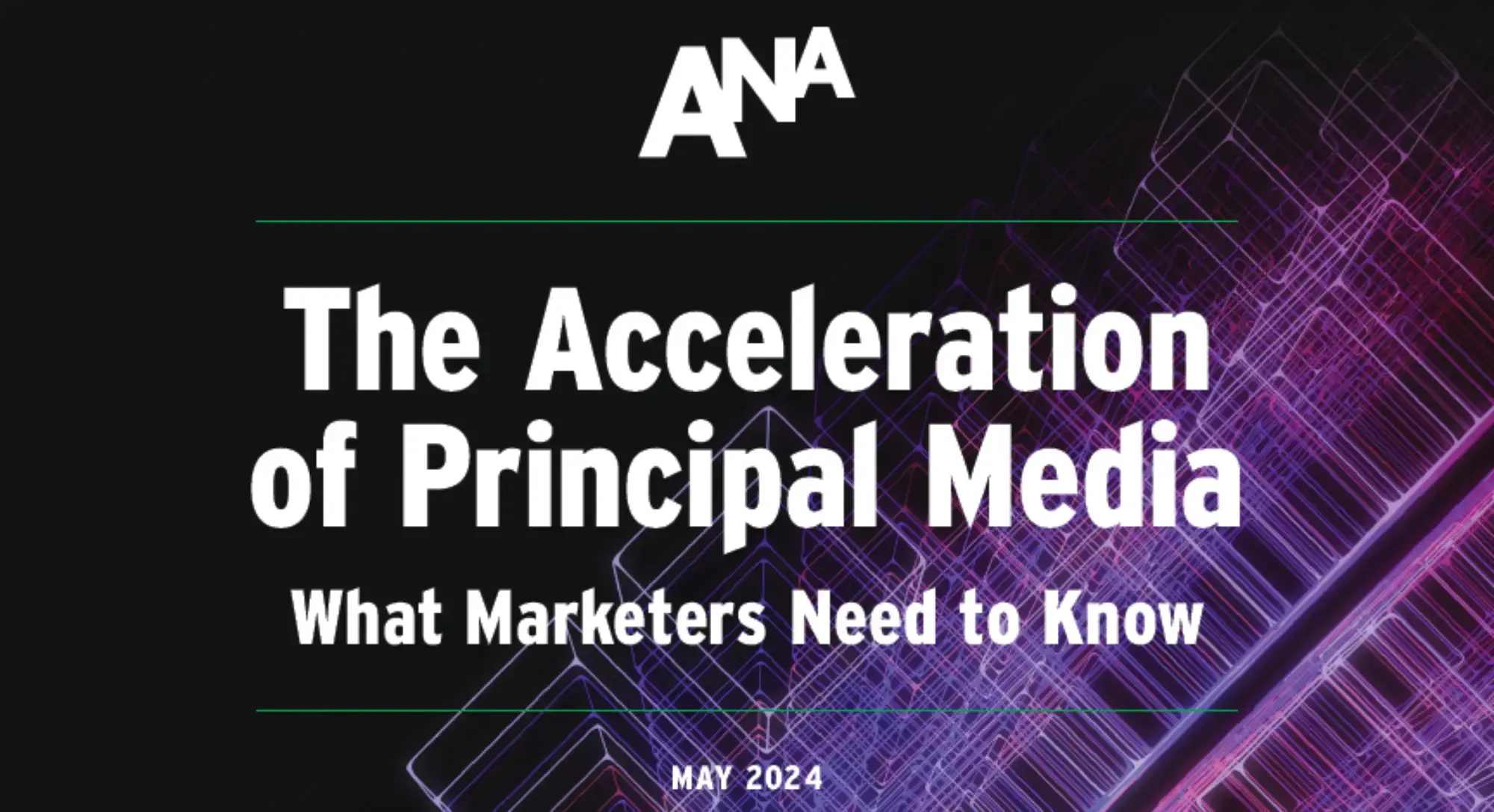Are you part of the 60% of advertisers scrambling to improve brand safety in the ever-evolving programmatic landscape?
If so, you're not alone. WARC's latest report, "The Future of Programmatic 2024", has just landed, and it's painting a picture of an industry at a crossroads.
As the CEO of a global media consultancy, I've seen trends come and go, but the shifts outlined in this report are game-changers.
Let's cut to the chase: despite programmatic channels now accounting for over 70% of digital ad spend, the industry is facing a crisis of confidence.
Brand safety concerns are top of mind, with a staggering 60% of survey respondents citing it as their primary worry. And that's just the tip of the iceberg.
In this article, I'm going to dive deep into the report's findings, offering you my take on what they mean for your business.
Ready to turn these challenges into opportunities? Let's dive in.
Brand Safety: The Elephant in the Room
If there's one thing that keeps advertisers up at night in 2024, it's brand safety. And with good reason.
The WARC report reveals a startling statistic: over 60% of survey respondents cite brand safety as their primary concern in programmatic advertising.
Let that sink in for a moment...
In an industry driven by data and technology, our biggest worry is still about where our ads end up.
The Quality Conundrum
Here's the thing: despite programmatic channels now gobbling up over 70% of digital ad spend, there's widespread dissatisfaction with the quality of ad placements.
It's like we're throwing more money into a leaky bucket and wondering why we're not getting the results we want.
But it's not just about ads appearing next to questionable content. It's about the overall quality of the advertising ecosystem.
Low-quality ads aren't just annoying for consumers; they're toxic for brands. They erode trust, diminish engagement, and ultimately, hit where it hurts most - the bottom line.
Verification: The New Frontier
So, what's the solution?
According to the report, 56% of respondents have identified enhanced advertising verification capabilities as a crucial area of focus.
In other words, we're not just looking for better places to put our ads; we're demanding better ways to ensure they're where they should be.
This shift towards verification isn't just a trend; it's a necessity.
As Hannah Rook, Head of Intelligence and Insights at MediaBrands Magna Group, puts it:
"Advertisers and agencies need to take a more proactive and comprehensive approach to brand safety, expanding their placement criteria to make better decisions and ensure their ads appear in appropriate and relevant environments."
Beyond Block Lists: A Holistic Approach to Brand Safety
But here's where I'll add my two cents: verification alone isn't enough. We need to think bigger. Here's what I propose:
- Contextual Intelligence: Instead of just avoiding bad placements, let's focus on finding the best ones. Advanced contextual targeting can help ensure your ads appear in environments that not only safe, but relevant and engaging.
- Supply Path Optimisation: It's time to take a hard look at your supply chain. Work with trusted partners and demand transparency at every step. Remember, a cleaner supply path doesn't just improve brand safety; it can also boost your ROI.
- Education and Alignment: Brand safety isn't just a technical issue; it's a business issue. Ensure everyone in your organisation, from the C-suite to the front lines, understands its importance and is aligned on your brand safety strategy.
- Continuous Monitoring and Adaptation: The digital landscape is ever-changing, and so are the risks. Implement robust monitoring systems and be prepared to adapt your strategy as new challenges emerge.
Brand safety in programmatic isn't just about avoiding disaster; it's about creating an environment where your brand can thrive.
By taking a proactive, holistic approach to brand safety, you're not just protecting your brand - you're positioning it for success in the complex programmatic landscape of 2024 and beyond.
Remember, in the world of programmatic, your brand is only as safe as your strategy.
Make sure yours is up to the task.
Navigating the Cookie-Less Maze
If brand safety is keeping advertisers up at night, the impending cookie-less future is giving them indigestion over breakfast.
Despite Google's recent announcement to delay the full phase-out of third-party cookies, the writing is on the wall: the days of relying on these digital crumbs are numbered.
The Adaptation Gap
Here's a sobering statistic from the WARC report: only 25% of survey participants believe that progress is adequate in adapting to this shift.
In other words, three-quarters of the industry is still scrambling to find their footing in this new landscape.
It's as if we're all playing a game of digital musical chairs, and the music is about to stop.
But here's the kicker: this isn't just about losing a targeting tool. It's about reimagining how we connect with consumers in a privacy-first world.
First-Party Data: The New Gold Standard
So, what's the lifeline? First-party data.
More than 75% of respondents are investing in first-party data strategies, with 57% considering it the most promising solution for future success.
It's clear: those who can harness the power of their own data will have a significant advantage in the post-cookie world.
As Wayne Blodwell, Co-Founder and CEO of Impact Media, notes:
"Google's decision to keep cookies has not changed the direction of travel for the industry. Advertisers should continue leaning into smart, cookie-free techniques like attention and econometrics to prepare for a privacy-first world."
Beyond First-Party Data: A Holistic Approach
While first-party data is crucial, it's not a silver bullet. Here's my take on how to thrive in the cookie-diminished future:
- Invest in Data Infrastructure: It's not just about collecting first-party data; it's about having the systems in place to activate it effectively. Invest in robust Customer Data Platforms (CDPs) and data management solutions.
- Embrace Contextual Targeting: As individual tracking becomes more challenging, the context in which ads appear becomes more critical. Advanced contextual targeting can provide relevance without relying on personal data.
- Focus on Cohort-Based Strategies: Instead of targeting individuals, consider grouping users into cohorts based on behaviours and interests. This approach can balance personalisation and privacy.
- Leverage AI and Machine Learning: These technologies can help identify patterns and insights in your first-party data that might not be immediately apparent, leading to more effective targeting and personalisation.
- Prioritise Transparency and Value Exchange: Be upfront with consumers about the data you're collecting and how you're using it. Offer clear value in exchange for their information.
The cookie-less future isn't something to fear; it's an opportunity to reset and build stronger, more meaningful connections with our audiences.
By focusing on first-party data, embracing new technologies, and prioritising consumer privacy, we can create a programmatic ecosystem that's not just effective, but also ethical and sustainable.
But remember, in this new world, success won't be determined by how much data you have, but by how smartly you use it.
The Transparency Trap
If programmatic advertising were a magic show, we'd all be demanding to know how the tricks are done.
The WARC report pulls back the curtain on a troubling reality: transparency in the programmatic supply chain is still more illusion than fact.
The Vanishing Ad Dollar Act
Let's start with a number that should make every advertiser sit up and take notice: according to the ANA's study, only 36 cents of every dollar spent on programmatic advertising actually reaches consumers.
That's right - for every dollar you're spending, 64 cents is disappearing into the depth of the supply chain.
But where's it going?
A significant portion is being lost to low-quality and fraudulent impressions. It's as if we're trying to fill a bathtub with the drain wide open.
The Inaction Paradox
Here's where it gets really interesting - and frustrating.
Despite this alarming statistic, less than half of advertisers (49%) have established direct contracts or taken necessary measures to audit ad quality.
It's like we're all watching our wallets being pickpocketed in slow motion, but only half of advertisers are trying to do something about it. Quite alarming, isn't it?
Breaking the Cycle: A Call to Action
So, what's the solution? It's time for collective action. Here's my roadmap for bringing transparency to the programmatic jungle:
- Demand Supply Path Optimisation (SPO): It's time to take a hard look at your supply chain. Work with partners who can provide clear visibility into where your ads are being placed and how your budget is being spent.
- Implement Blockchain Solutions: Blockchain technology can provide an immutable record of each transaction in the supply chain, bringing unprecedented transparency to the process.
- Prioritise Direct Relationships: While the open marketplace has its place, consider increasing your use of private marketplaces (PMPs) and programmatic direct deals. These arrangements often offer greater transparency and control.
- Invest in Ad Verification Tools: Don't just take your partners' word for it. Implement robust ad verification tools to ensure your ads are being seen by real humans in brand-safe environments. I would recommend using Fou Analytics.
- Push for Industry Standards: Support industry initiatives aimed at increasing transparency. The more we collectively demand transparency, the harder it will be for bad actors to hide in the shadows.
The Fraud Factor
Let's not forget about ad fraud. It's the bogeyman of digital advertising, and it's not going away anytime soon.
But here's the thing: while we can't eliminate fraud entirely, we can make it a lot harder for fraudsters to succeed.
Consider implementing these strategies:
- Use Advanced Fraud Detection Tools: AI and machine learning are getting better at spotting fraudulent activity in real-time.
- Focus on Quality Over Quantity: Sometimes, paying a premium for verified, high-quality inventory is more cost-effective than chasing cheap impressions.
- Educate Your Team: Fraud tactics are constantly evolving. Make sure your team is up-to-date on the latest threats and best practices for combating them.
The Transparency Imperative
Here's the bottom line: transparency isn't just about knowing where your money is going. It's about trust. It's about effectiveness. And ultimately, it's about the future of programmatic advertising itself.
As an industry, we're at a crossroads. We can continue down the path of opacity and diminishing returns, or we can demand better. We can insist on a programmatic ecosystem that's transparent, accountable, and focused on delivering real value to advertisers and consumers alike.
Programmatic's Carbon Footprint
Did you know that programmatic advertising contributes over 215,000 metric tons of carbon emissions monthly across major economies - equivalent to the annual emissions of 47,000 passenger vehicles?
Yet, the WARC report reveals a concerning lack of action:
- Nearly 60% of surveyed agencies and advertisers don't prioritise reducing these emissions.
- Only 31% have adopted carbon emission measurement frameworks.
- 34% have taken no action to mitigate their carbon footprint.
The industry cites lack of standards and knowledge gaps as key barriers. However, some forward-thinking advertisers are already working with their agencies to forecast and reduce emissions in media plans.
As sustainability becomes increasingly crucial, our industry must prioritise measuring, reducing, and optimising for lower carbon impact alongside traditional performance metrics.
If you don't know where to start, I would recommend reaching out to The Payback Project.
From Open Web to Walled Gardens
Lastly, the WARC report highlights a significant shift in programmatic investment patterns, moving away from the open web towards walled gardens. Key findings include:
- Five major platforms are expected to capture over half of global advertising spend this year.
- Three-quarters of respondents are allocating 40% or less of their budgets to open web advertising.
- There's a growing preference for programmatic direct deals and traditional real-time bidding within walled gardens.
- Social media and gaming are anticipated to see the largest increases in programmatic investment.
This trend reflects advertisers' pursuit of efficiency and data richness, but raises questions about competition, data ownership, and the future of the open web.
Balancing the benefits of walled gardens with the need for a diverse, open ecosystem will be crucial for the industry's future.
Conclusion and Next Steps
As we've delved into the WARC report and examined the state of programmatic advertising in 2024, a pressing question emerges:
Is programmatic truly delivering on its promises to advertisers?
The hard truth is that programmatic, for all its technological sophistication, is falling short in several critical areas:
- Efficiency: With only 36 cents of every programmatic dollar reaching consumers, can we really call this an efficient system?
- Transparency: The persistent issues with ad fraud and the opacity of the supply chain undermine the trust that's fundamental to effective advertising.
- Brand Safety: Despite being a top priority, 60% of advertisers are still grappling with brand safety issues. This is unacceptable in a mature advertising channel.
- Privacy and Targeting: The struggle to adapt to a cookie-less world reveals how dependent programmatic has become on practices that are increasingly at odds with privacy concerns.
- Sustainability: The significant carbon footprint of programmatic advertising is an issue our industry can no longer ignore.
Given these challenges, it's fair to question whether programmatic, in its current form, is truly serving advertisers' best interests.
However, it's important to recognise that programmatic isn't inherently flawed. The issue lies in how it's been implemented and managed. The technology itself still holds immense potential for precision, scale, and efficiency in advertising. But to realise this potential, you need a radical rethink of your approach.
What's needed is not blind faith in programmatic, but a strategic, critical approach that:
- Demands real transparency and accountability from the entire supply chain
- Priorities quality of impressions over sheer quantity
- Puts data privacy and consumer trust at the forefront
- Incorporates sustainability as a key performance metric
- Balances the use of walled gardens with investments in the open web
In short, we need to evolve programmatic from a technology-driven approach to a strategy-driven one.
This is where we come in. At Abintus, we're not just media experts. We're critical thinkers who understand both the potential and the pitfalls of programmatic advertising. Our approach is about helping you navigate this complex landscape, maximising the benefits while mitigating the risks.
Ready for a frank, no-nonsense discussion about how to make programmatic work for you? Schedule a free consultation with us today. Let's cut through the hype and develop a programmatic strategy that truly serves your business goals.
The future of advertising is too important to leave to algorithms alone. It's time to put strategy back in the driver's seat.
Additional resources related to this topic:
- Ad Viewability: Should advertisers pay for non-viewed impressions?
- Exposed: The Adtech Tax Eating Your Digital Media Campaign Budgets
- What Advertisers Need to Know to Win at Social Media in 2024
--------------------------------------------------------------------------------
About the Author
 Philippe Dominois, co-founder and CEO of Abintus Consulting and Head Coach at the Abintus Academy, brings over 25 years of global media expertise to the table. With a wealth of experience from his tenure at leading media agencies such as Wavemaker, Starcom, and Carat, as well as more than a decade at Ebiquity, Philippe has established himself as a thought leader in the industry. He has authored hundreds of articles focusing on media management best practices, sharing his insights and knowledge with the wider media community.
Philippe Dominois, co-founder and CEO of Abintus Consulting and Head Coach at the Abintus Academy, brings over 25 years of global media expertise to the table. With a wealth of experience from his tenure at leading media agencies such as Wavemaker, Starcom, and Carat, as well as more than a decade at Ebiquity, Philippe has established himself as a thought leader in the industry. He has authored hundreds of articles focusing on media management best practices, sharing his insights and knowledge with the wider media community.
Media Auditing Services: Click Here
Agency Pitch Management Guide: Click Here
Free Agency Contract Assessment: Click Here
Free Media Training for Advertisers: Click Here



